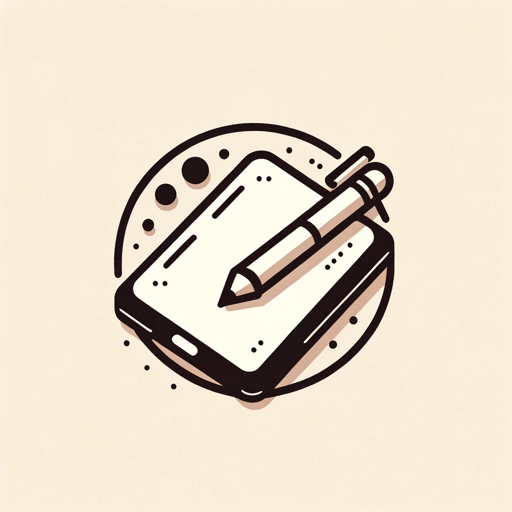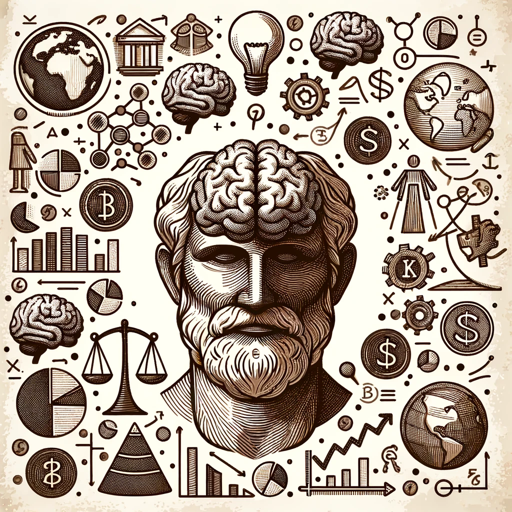Immersive Experience Designer-immersive experience creation tool.
AI-powered tool for immersive experience design.
I need some ideas for an immersive experience...
Assist me with an experience proposal...
Can you design a new experience for me?
Related Tools
Load More
UX/UI Designer
Crafts intuitive and aesthetically pleasing user interfaces using AI, enhancing the overall user experience.

World Builder
Stimulates imagination in worldbuilding with Socratic dialogue.

Immersive Roleplay
Interactive and Immersive Storytelling: Your personal AI character awaits to bring your tales to life!

UI/UX Mentor
Assists designers in UX decisions, heuristic evaluation, live website audit, and creating pixel perfect components!

UX Mentor
Hey, I'm here to support you on your UX and Design Leadership journey.

Headspace OS
The Operating System for Your Mind
20.0 / 5 (200 votes)
Overview of Immersive Experience Designer
The Immersive Experience Designer is a specialized tool designed to assist in the conceptualization, development, and refinement of immersive experiences. This tool focuses on creating engaging narratives and environments by guiding users through a structured design process. The core of its functionality is based on the TISECT Method, which stands for Theme, Indexing, Scaffolding, Experiences, Critical Thought, and Takeaway. These six parameters are essential in shaping an immersive experience that is both coherent and compelling. By breaking down the process into these distinct areas, the Immersive Experience Designer ensures that each aspect of the experience is thoughtfully crafted and aligned with the overall narrative. For example, a user might want to create an immersive escape room based on a historical event. The Immersive Experience Designer would help them define the theme (e.g., a spy mission during World War II), identify the appropriate indexing (e.g., references to real historical figures or events), scaffold the experience within a familiar social structure (e.g., a military briefing), and so on. This systematic approach enables creators to develop experiences that are not only engaging but also meaningful and memorable for participants.

Key Functions of Immersive Experience Designer
Structured Experience Design
Example
A theme park designer using the TISECT Method to create a new attraction.
Scenario
In this scenario, the designer is tasked with creating a new immersive ride. They use the tool to define a compelling theme (e.g., exploring an ancient temple), decide on indexing (e.g., drawing inspiration from existing mythology), and scaffold the ride within a familiar adventure structure (e.g., a guided tour gone wrong). The tool helps ensure that every element, from the initial briefing to the final takeaway, is aligned with the overall experience, resulting in a cohesive and engaging attraction.
Creative Brainstorming and Ideation
Example
An event planner creating a themed corporate retreat.
Scenario
The event planner wants to design a unique team-building retreat. By using the Immersive Experience Designer, they can brainstorm various themes (e.g., survival in a post-apocalyptic world), choose a reference point that attendees will easily recognize (e.g., popular movies or books), and build the experience around a common corporate structure (e.g., working in teams to solve challenges). This function helps the planner develop creative and memorable experiences that resonate with participants.
Experience Refinement and Detail Enhancement
Example
A VR game developer refining an interactive story.
Scenario
The developer has already created the basic framework for a VR game but needs to refine the narrative and ensure that all elements are aligned. Using the tool, they can revisit each parameter, ensuring that the theme is consistently represented throughout the game, that players understand their roles and objectives, and that the overall experience delivers a meaningful takeaway. This function is crucial for developers who need to ensure that their immersive stories are polished and fully realized.
Target Users for Immersive Experience Designer
Creative Professionals
This group includes theme park designers, VR/AR developers, event planners, and other professionals who create immersive environments. These users benefit from the structured approach of the Immersive Experience Designer, which helps them organize their ideas and ensure that every aspect of their experience is coherent and engaging. The tool is particularly useful for those who need to create complex, multi-layered experiences that require careful planning and coordination.
Educational Institutions
Schools, museums, and other educational organizations can use the Immersive Experience Designer to create educational experiences that are both informative and engaging. By using the tool, educators can design experiences that are thematically rich and aligned with learning objectives. For example, a history museum might use the tool to create an interactive exhibit that immerses visitors in a specific time period, helping them to understand the context and significance of historical events.

Guidelines for Using Immersive Experience Designer
Visit aichatonline.org
Access the Immersive Experience Designer for a free trial without login, also no need for ChatGPT Plus. The tool is easily accessible and user-friendly, designed to help users create detailed and engaging immersive experiences.
Understand the TISECT Method
Familiarize yourself with the TISECT Method: Theme, Indexing, Scaffolding, Experiences, Critical Thought, and Takeaway. This method forms the core of experience design and is essential for effective use of the tool.
Define Parameters
Input or randomly generate the six key parameters: Theme, Indexing, Scaffolding, Experiences, Critical Thought, and Takeaway. These parameters will guide the design process and create a cohesive narrative.
Iterate and Refine
Review and refine each parameter. The tool offers suggestions and asks questions to help you enhance your experience design. Pay attention to the feedback to ensure a well-rounded and immersive outcome.
Generate and Review Proposal
Once satisfied, generate a detailed proposal, including a title, summary, and optional concept art. Review the proposal to ensure it aligns with your vision and goals.
Try other advanced and practical GPTs
Logic Linker
AI-powered structured reasoning and problem-solving.

Coding Bacon
Enhance your Roblox games with AI-powered scripting

PowerShell for O365, Azure AD & Win AD
AI-powered scripting for seamless Microsoft administration

FacebookData Summary Analyst
AI-powered Facebook data and content insights.

Image Bot
AI-powered image conversion and content generation tool.
Your META Ads Strategist
AI-Powered Insights for Meta Ads Success

Natural Language Processing
Empower your text analysis with AI.

MS Learn GPT
AI-Powered Learning for Microsoft & GitHub.

Scholarly Insight
AI-powered academic support for researchers

🎯X Viral - Transform Tweets into Trendsetters
AI-powered viral tweet enhancer.

Mobile App Builder
AI-powered mobile app creation

1 Liner Jokes
AI-powered jokes for every occasion.

- Creative Brainstorming
- Concept Creation
- Proposal Development
- Immersive Design
- Experience Planning
Immersive Experience Designer Q&A
What is the TISECT Method used in Immersive Experience Designer?
The TISECT Method is a structured approach to designing immersive experiences. It stands for Theme, Indexing, Scaffolding, Experiences, Critical Thought, and Takeaway. Each element helps create a cohesive and engaging experience, guiding users from concept to execution.
Can I generate random suggestions for the experience parameters?
Yes, Immersive Experience Designer allows you to generate random suggestions for each of the six key parameters. This feature is useful if you’re looking for inspiration or want to explore different creative directions.
What type of proposals can I create using this tool?
You can create detailed proposals that outline every aspect of the immersive experience you’ve designed. Proposals include a title, summary, detailed descriptions of each parameter, and optional concept art. These proposals are suitable for professional use and presentations.
Is there any specific prerequisite knowledge needed to use this tool?
While no specific prerequisite knowledge is required, familiarity with basic storytelling and experience design principles, especially the TISECT Method, will enhance your use of the tool. The tool itself offers guidance and explanations to help users at every step.
How does Immersive Experience Designer assist in refining ideas?
The tool not only helps in initial idea generation but also offers suggestions and questions for each parameter, encouraging you to think deeper and refine your concepts. This iterative process ensures that the final experience is well-rounded and engaging.